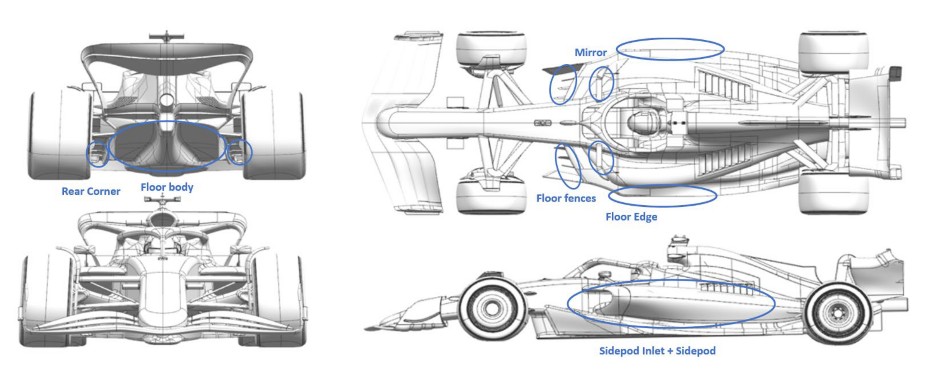F1 News: Performance Upgrades Teams brought to British GP
Many teams brought performance upgrades this weekend for the 2024 British GP at Silverstone. Below is the list of upgrades by team. The McLaren upgrades are working well as their cars were 1st and 3rd in opening practice.
ORACLE RED BULL RACING
|
Updated component |
Primary reason for upgrade |
Geometric differences compared to previous version |
Brief description on how the upgrade works |
|
|
1 |
Floor Body |
Performance – Flow Conditioning |
Subtle re-profiling of the surface above and behind the lower SIS tube |
Optimizing the upper floor surface further based upon research and comparison with full scale results to get more energy thus pressure to the floor edge wing. |
|
2 |
Floor Edge |
Performance – Local Load |
Minor re-profiling of the edge wing with attendant detail |
Given higher pressure upstream, the edge wing detail has been subtly changed to add more camber deriving more load whilst respecting the necessity for flow stability. |
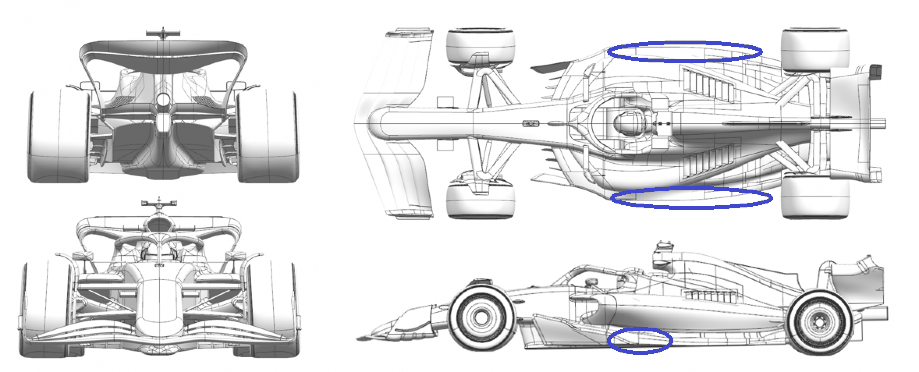
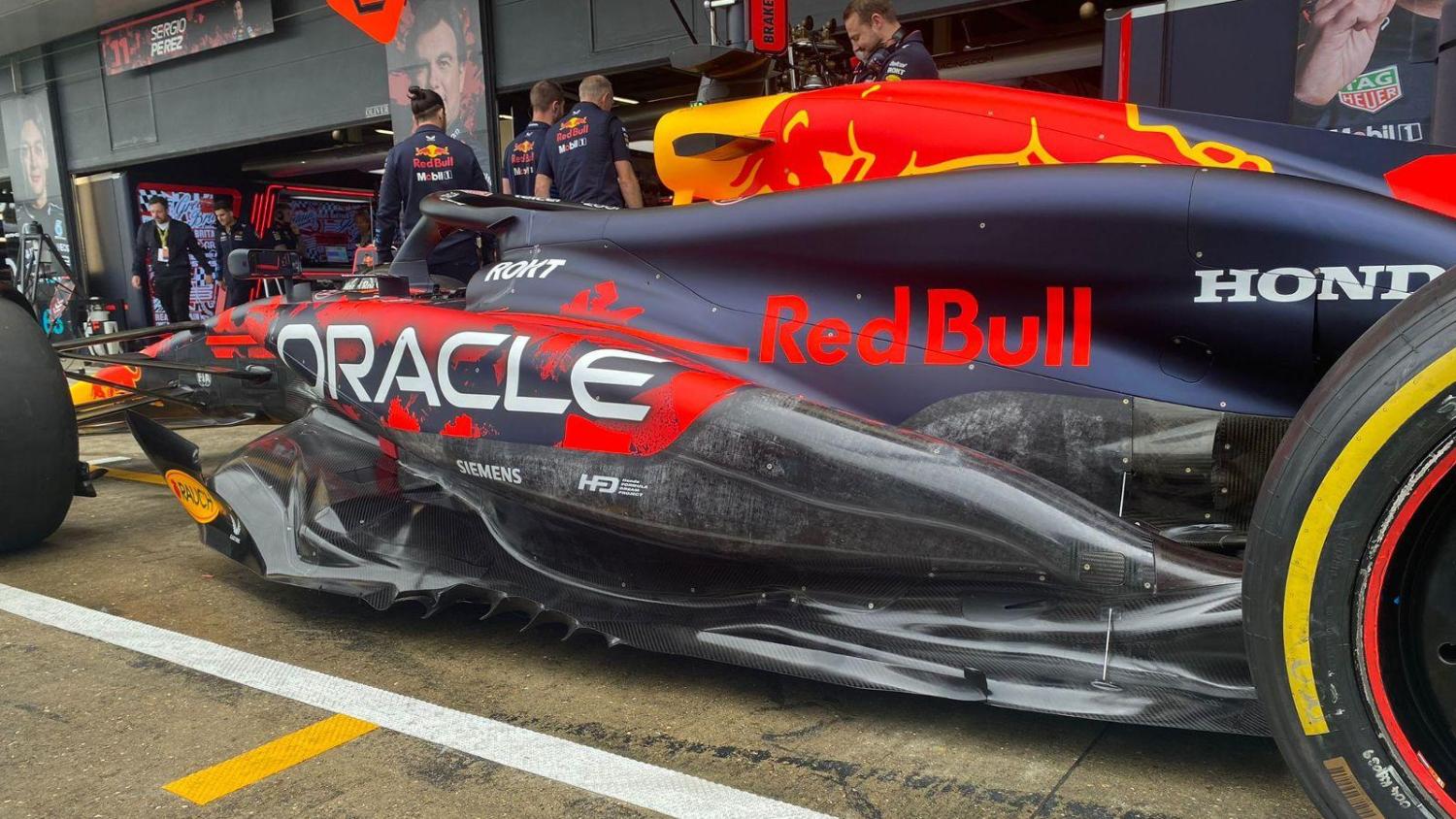
MERCEDES-AMG PETRONAS FORMULA ONE TEAM
|
Updated component |
Primary reason for upgrade |
Geometric differences compared to previous version |
Brief description on how the upgrade works |
|
|
1 |
Front Wing |
Circuit specific – Balance Range |
Trimmed front wing flap |
Trimmed/ smaller chord flap, reduces front wing load to achieve sensible car balance if low downforce rear wing is chosen to run. |
|
2 |
Rear Wing |
Circuit specific – Drag Range |
Reprofiled flap |
Reducing local flap curvature reduces local flap load and offloads the mainplane – results in a lower downforce and lower drag upper wing. |
|
3 |
Front Corner |
Circuit specific – Cooling Range |
Smaller front brake duct inlet and exit |
Reducing the brake duct inlet and exit size reduces the mass flow feeding and cooling the brake disc and caliper. |
|
4 |
Rear Corner |
Performance – Local Load |
Upper lip realignment |
Better aligning the upper caketin lip to the local onset flow improves flow attachment through a range of conditions resulting in more local load. |

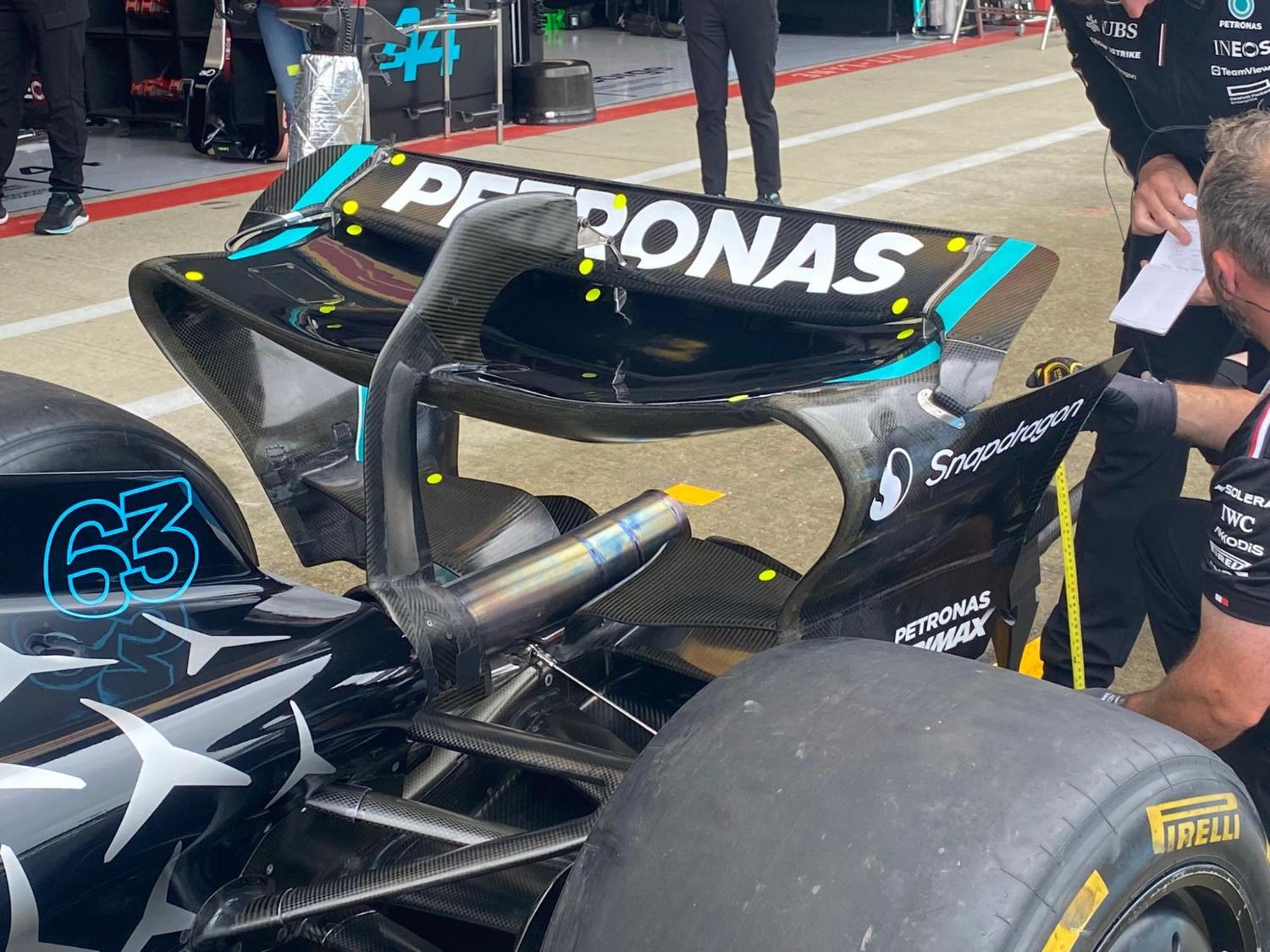
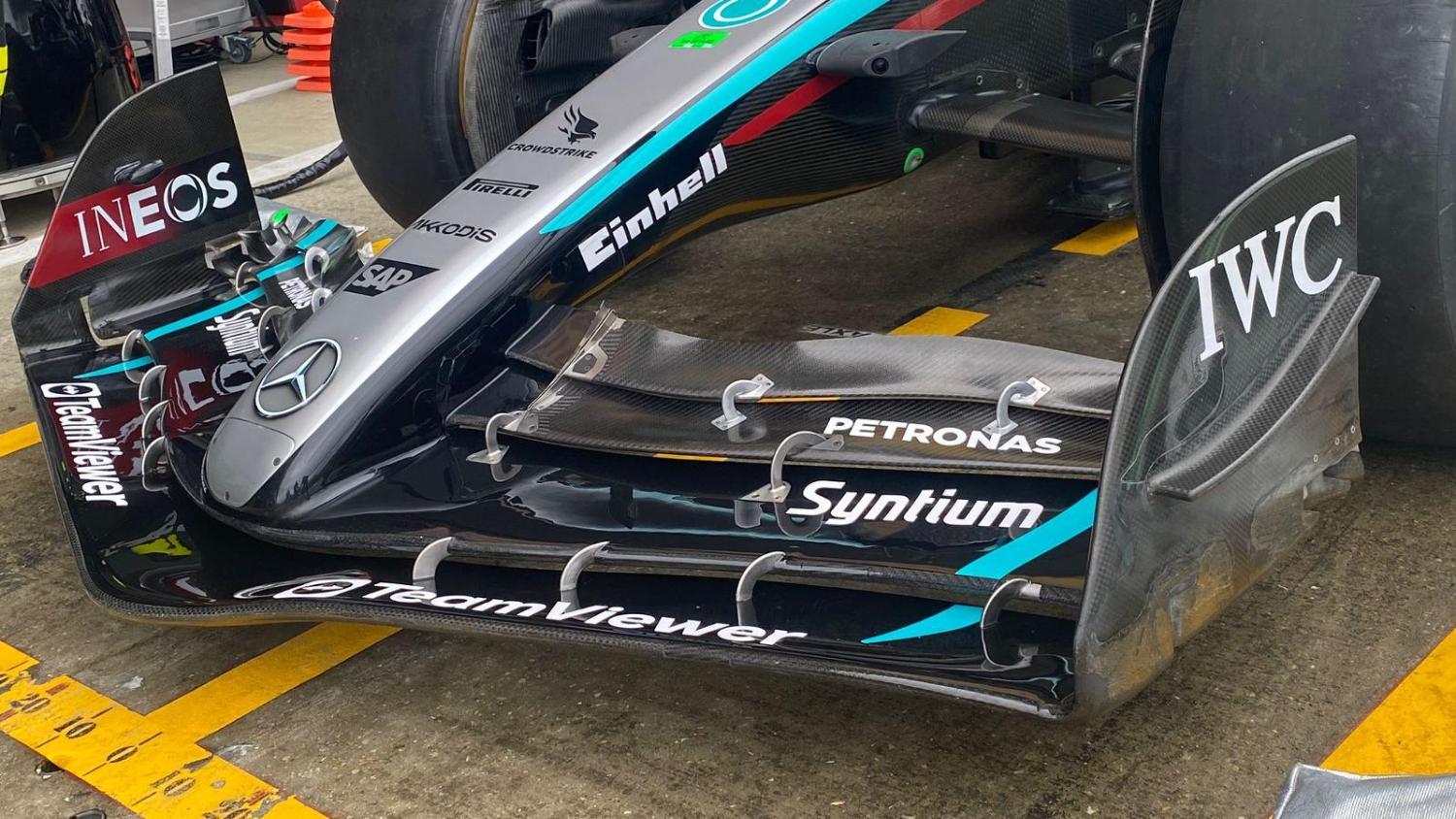
MCLAREN FORMULA 1 TEAM
|
Updated component |
Primary reason for upgrade |
Geometric differences compared to previous version |
Brief description on how the upgrade works |
|
|
1 |
Rear Wing |
Circuit specific – Drag Range |
Lower Downforce Rear Wing |
In anticipation of higher isochronal circuits, a less loaded Rear Wing assembly is introduced for this event, with the aim of reducing drag efficiently. |
|
2 |
Beam Wing |
Circuit specific – Drag Range |
High load Beamwing |
With the target to widen the operating range of the newly introduced low downforce wing, a high load Beam Wing has been designed to trade downforce and drag efficiently. |
|
3 |
Beam Wing |
Circuit specific – Drag Range |
Mid load Beamwing |
With the target to increase the operating range of the newly introduced low downforce wing, a mid load Beam Wing has been designed to trade downforce and drag efficiently. |
|
4 |
Beam Wing |
Circuit specific – Drag Range |
Low load Beamwing |
With the target to increase the operating range of the newly introduced low downforce wing, a low load Beam Wing has been designed to trade downforce and drag efficiently. |
|
5 |
Coke/Engine Cover |
Circuit specific – Cooling Range |
Additional Cooling Exit |
The new Bodywork features an additional cooling exit, allowing an increase in cooling massflow, resulting in both an increase in overall cooling capacity as well as efficiency. |
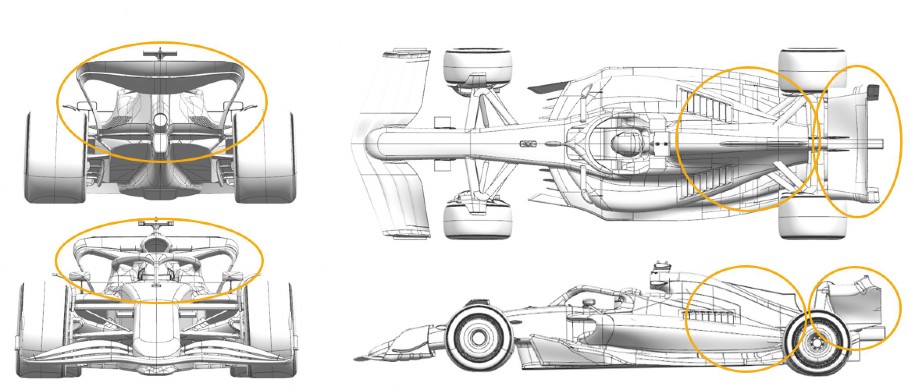
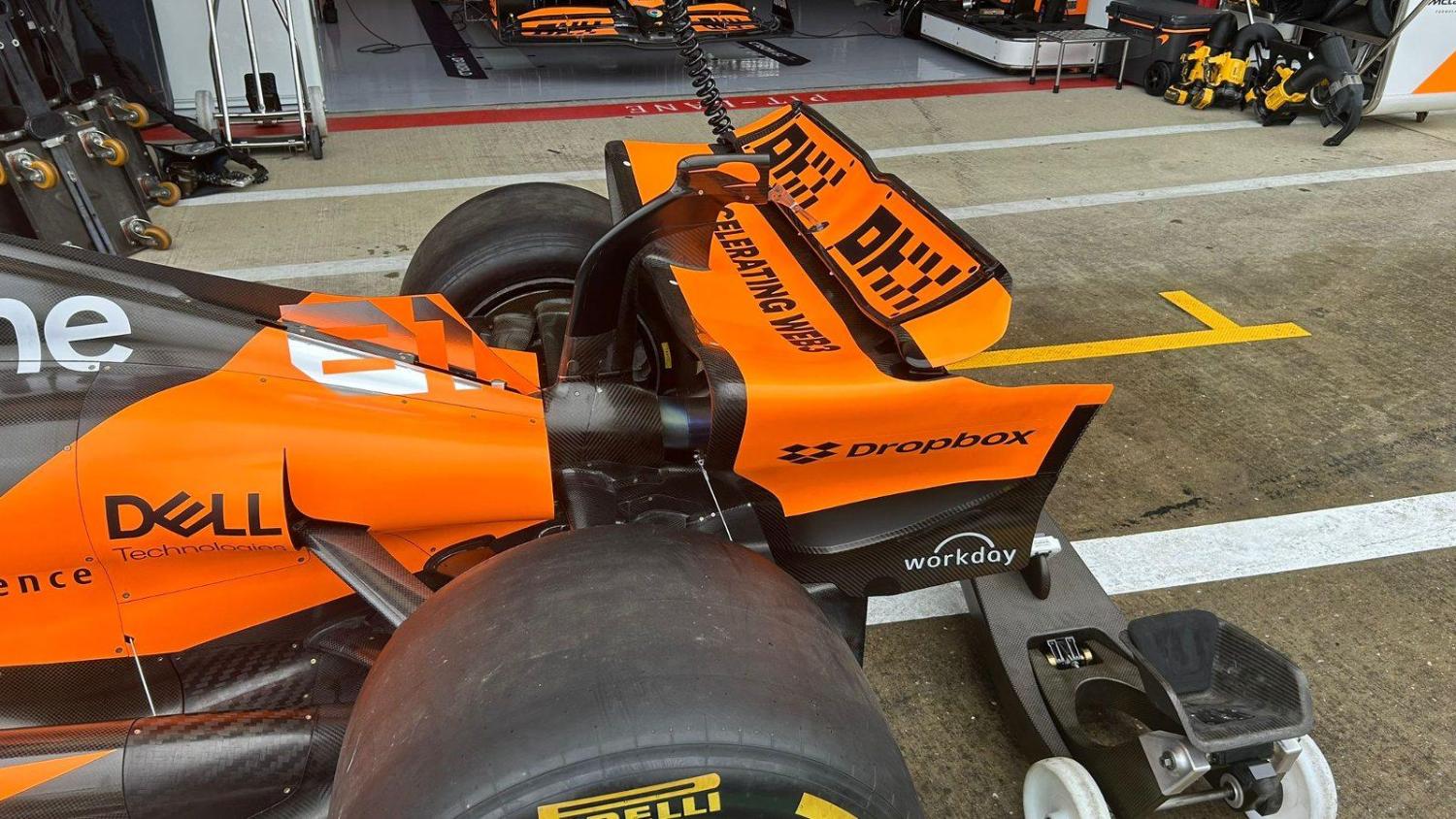
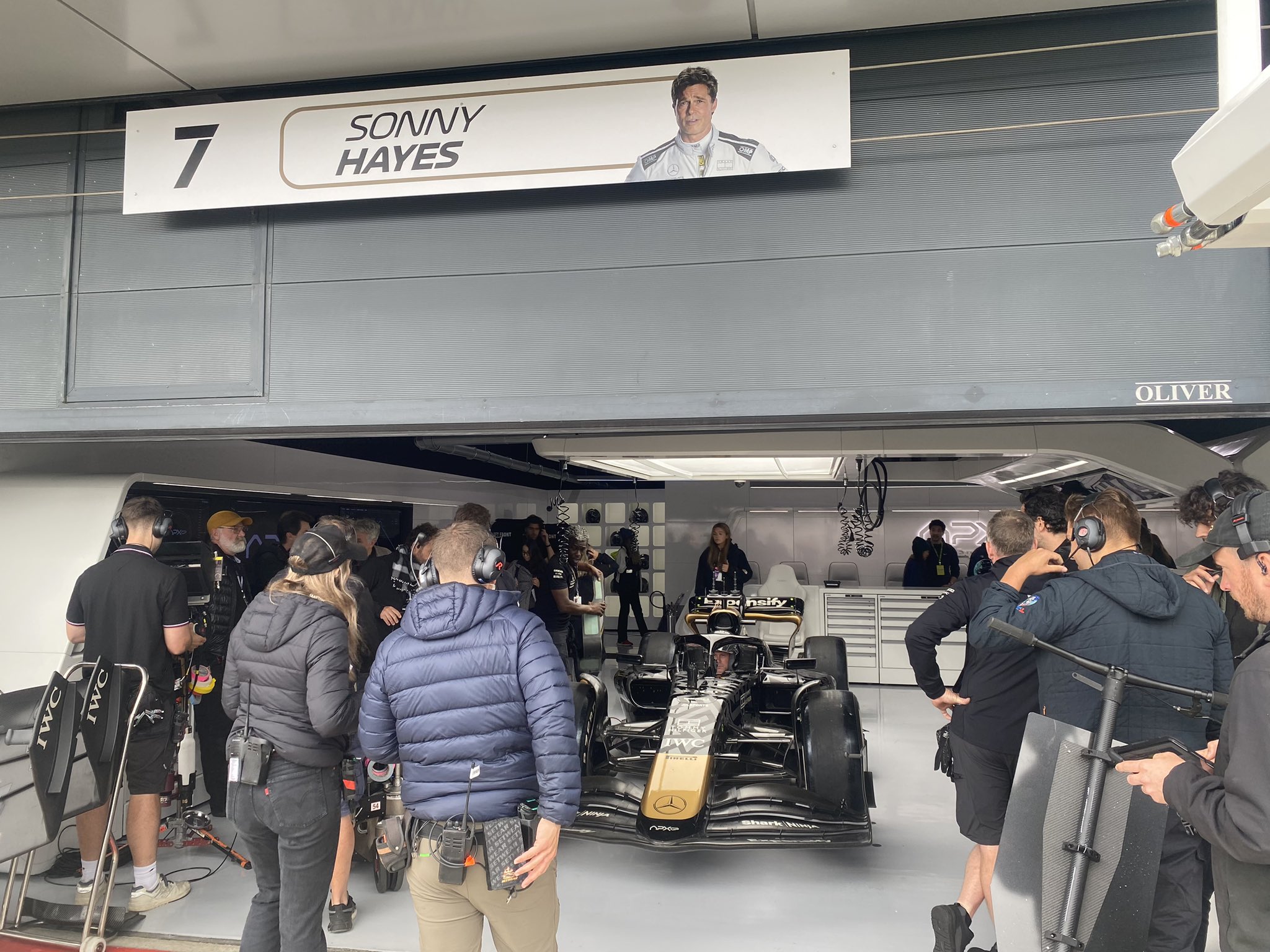
ASTON MARTIN ARAMCO FORMULA ONE TEAM
|
Updated component |
Primary reason for upgrade |
Geometric differences compared to previous version |
Brief description on how the upgrade work |
|
|
1 |
Front Wing |
Performance – Local Load |
Modified twist distribution of the wing elements changing the front view shape. |
Changing the twist distribution of the wing modifies the spanwise loading to improve the overall performance of the wing and downstream interactions. |
|
2 |
Rear Corner |
Performance – Local Load |
The small element on the outboard face of the lip has been replaced with a twin arrangement. |
The twin elements offer an improvement in alignment and downwash for improved wheel wake management increasing the load on surrounding geometry. |
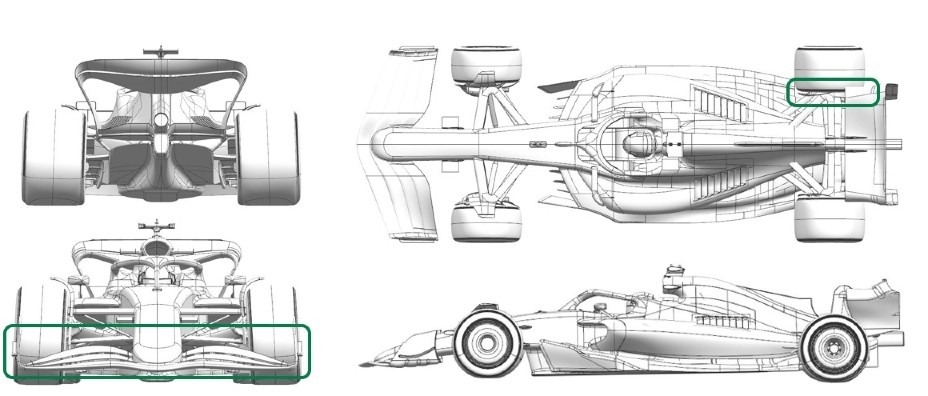
VISA CASH APP RB FORMULA ONE TEAM
|
Updated component |
Primary reason for upgrade |
Geometric differences compared to previous version |
Brief description on how the upgrade works |
|
|
1 |
Halo |
Performance – Flow Conditioning |
The winglet on the top of the Halo will be removed in some configurations. |
The airflow around the Halo influences the downstream areas of the car including the rear wing, making removing it relevant in certain circumstances. |
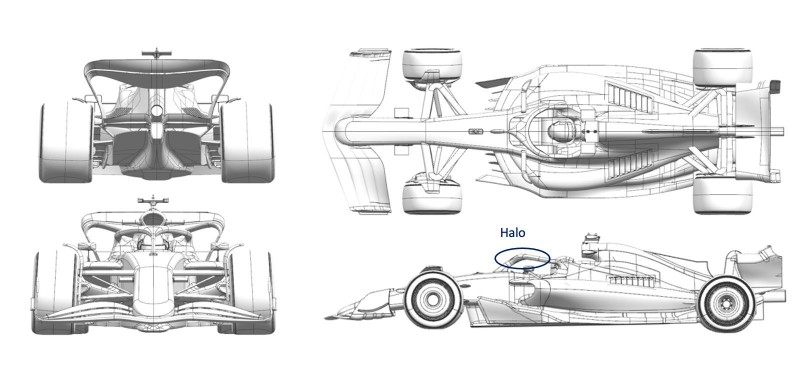
STAKE F1 TEAM KICK SAUBER
|
Updated component |
Primary reason for upgrade |
Geometric differences compared to previous version |
Brief description on how the upgrade works |
|
|
1 |
Floor Fences |
Performance – Flow Conditioning |
An additional, alternative trim of the floor fences |
The different trim of the floor fences further optimises the flow of air in this crucial area of the car, improving the overall flow and aero efficiency of the package. |
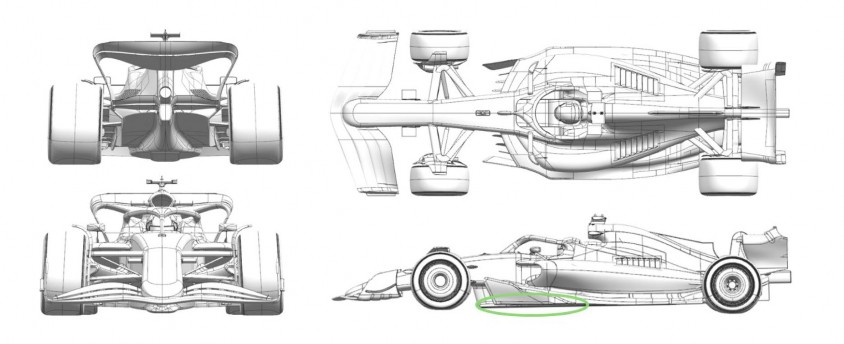
MONEYGRAM HAAS F1 TEAM
|
Updated component |
Primary reason for upgrade |
Geometric differences compared to previous version |
Brief description on how the upgrade work |
|
|
1 |
Floor Body |
Performance – Local Load |
Modification of the expansion with this new floor |
The different expansion increases the floor suction and therefore the underfloor mass-flow, resulting in overall more load coming from the floor. |
|
2 |
Floor Fences |
Performance – Flow Conditioning |
Alignment of the floor fences |
The new floor geometry requires a different alignment of the front floor fences, as the direction of the incoming floor changes with the floor expansion. |
|
3 |
Floor Edge |
Performance – Local Load |
The new floor body required a modification of the floor edge as well |
The new floor body has a different expansion and therefore requires an adaptation of the floor edge wing, which is now more coherent with floor body and is able to extract more flow, resulting in a local load increase. |
|
4 |
Sidepod Inlet |
Performance – Flow Conditioning |
Updated Inlet geometry, now with a longer higher lip |
This geometry allows to deliver a cleaner floe to the rear end of the car, resulting in an overall performance increase. |
|
5 |
Coke/Engine Cover |
Performance – Flow Conditioning |
The updated Inlet geometry required a minor revision of the sidepod |
The new Sidepod Inlet geometry required changes that protrude quite backwards on the sidepod, which was therefore updated accordingly. The new sidepod is now able to accommodate some top cooling gills as well. |
|
6 |
Mirror Stay |
Performance – Flow Conditioning |
The new Sidepod Inlet required a new rear stay of the mirror |
The updated rear stay of the mirror has changed position and was optimized to condition the top sidepod flow in order to increase the load of the rear end of the car. |
|
7 |
Rear Corner |
Performance – Local Load |
Different position and trim of the lower quadruplane (FIA geometry) |
The new floor required to optimize the flow around the rear tires as well. The improved incoming flow on the rear corner allows an increased expansion, resulting in a higher local load |
